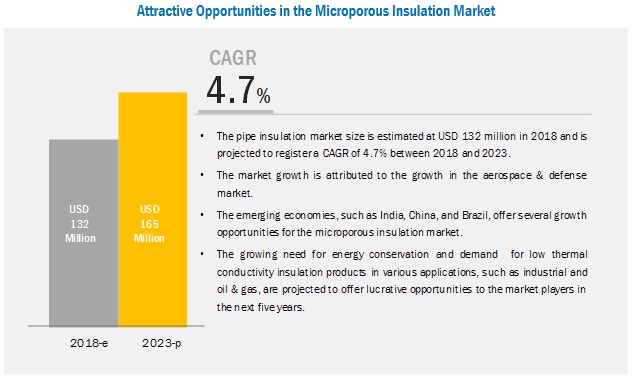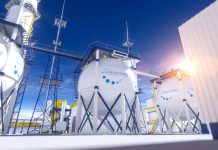The microporous insulation market is projected to grow from USD 132 million in 2018 to USD 165 million by 2023, at a CAGR of 4.7%, during the forecast period. Microporous insulation is a composite material comprising a blend of ceramic powders and fibers, with an average interconnecting pore size comparable to or even less than mean free path of air molecules at standard atmospheric pressure. The microporous insulation material is inorganic in nature, making it non-combustible and suitable for passive fire protection applications. The growing industrialization in Asia Pacific and South America and increasing oil & gas production in countries, such as the US, Saudi Arabia, Iran, and Russia drive the demand for microporous insulation. The requirement for high thermal insulation products in various applications, such as industrial, oil & gas, energy & power also drive the demand for microporous insulation.
Download the PDF Brochure @ https://www.marketsandmarkets.com/pdfdownloadNew.asp?id=129425481
The aerospace & defense application segment is projected to register the highest CAGR, in terms of value, between 2018 and 2023. The demand for microporous insulation is increasing in the aerospace application due to increasing demand for light-weight materials, which in turn, saves the fuel consumed during operation of an aircraft. In addition, the use of microporous insulation provides high performance and helps to meet the space and weight specifications in the aerospace sector. It is the most demanding sector in terms of performance & reliability due to operational and safety reasons.
Europe is projected to account for the largest share of the microporous insulation market during the forecast period.
Europe is estimated to be the largest microporous insulation market in 2018 and is expected to continue to lead the market till 2023, owing to rising awareness to conserve energy in the region. In addition, presence of stringent regulations regarding the use of insulation materials which comply with Registration, Evaluation, Authorisation and Restriction of Chemicals (REACH) and European Dangerous Substances Directive Amendment 97/69/EC, drive its demand in the region. Also, the presence of various manufacturers of microporous insulation in the region drives its demand.
Recent Developments
In July 2014, Morgan Advanced Materials acquired Porextherm Dämmstoffe GmbH (Germany), one of the leading manufacturers of microporous insulation panels. This helped the company to strengthen its product portfolio of microporous insulation and vacuum insulation panels.
In May 2014, Industrial Insulation Group, LLC (US), a subsidiary of Johns Manville, launched InsulThin, a high temperature, flexible, hydrophobic, microporous, and fumed silica blanket insulation. The new product launch helped the company to broaden its industrial insulation product portfolio.
In March 2014, Promat International opened Nippon Microtherm Factory in Tsu City, in Japan. The expansion helped the company to strengthen its high-performance insulation product business.
To speak to our analyst for a discussion on the above findings, click Speak to Analyst






